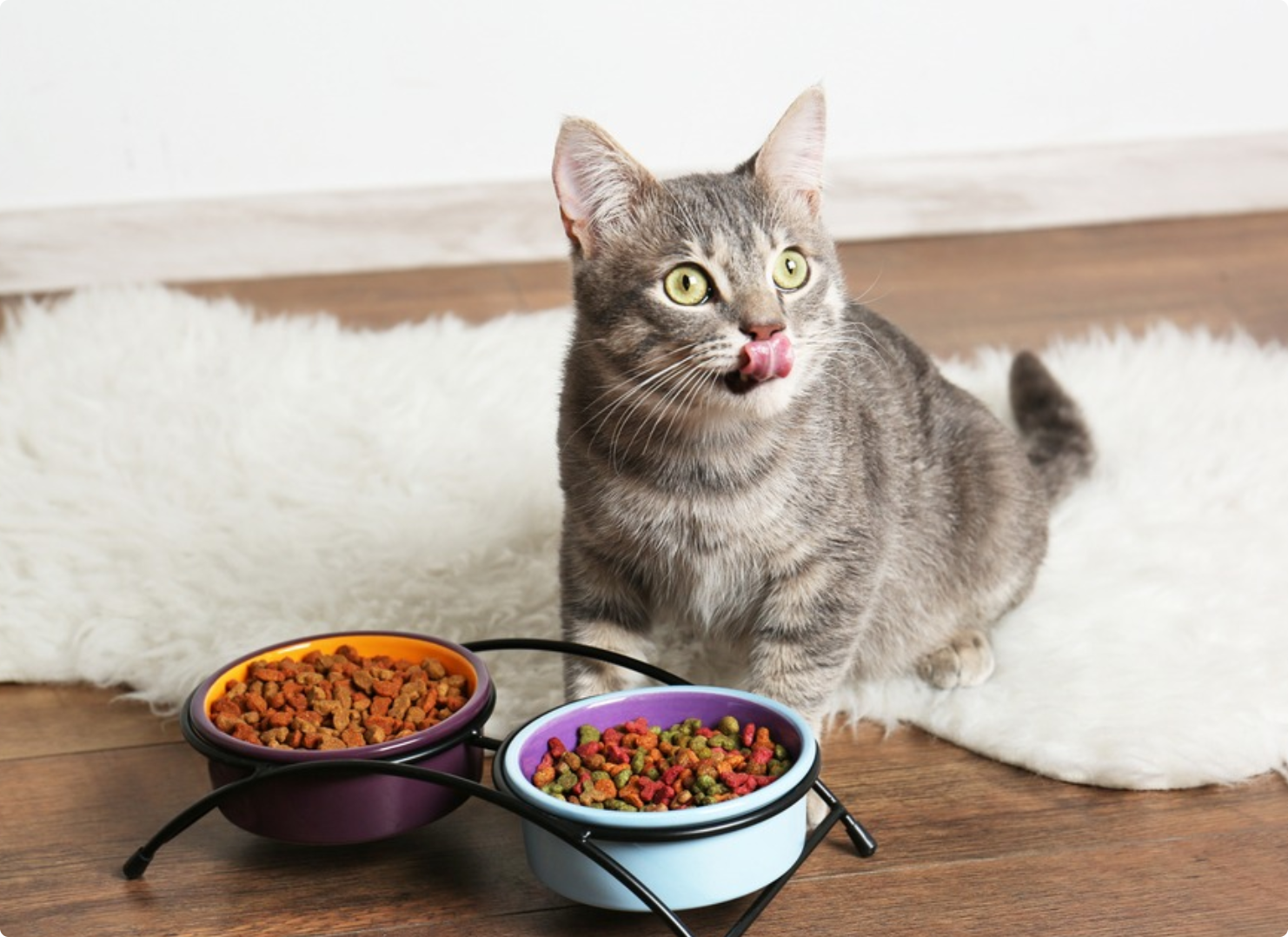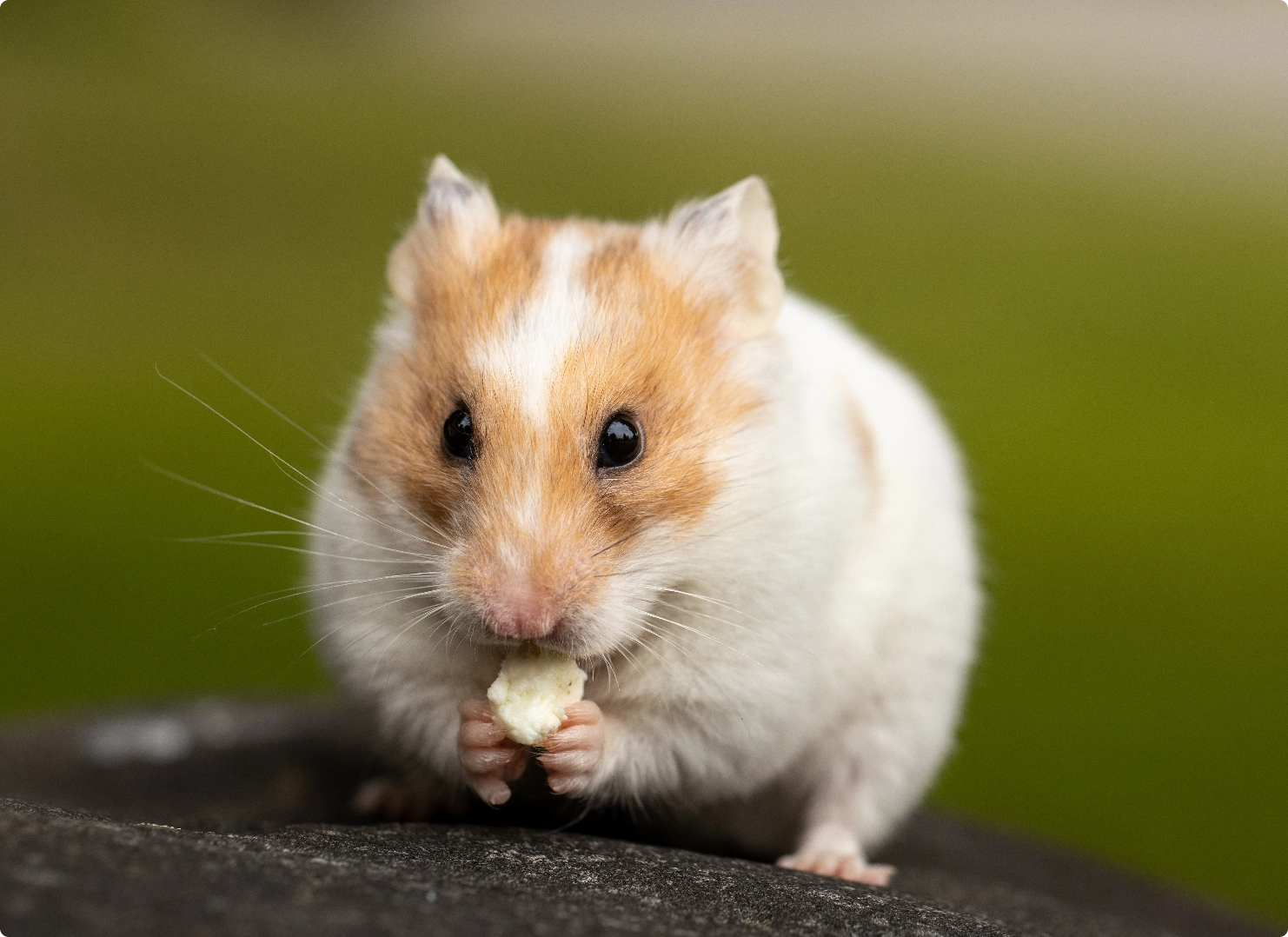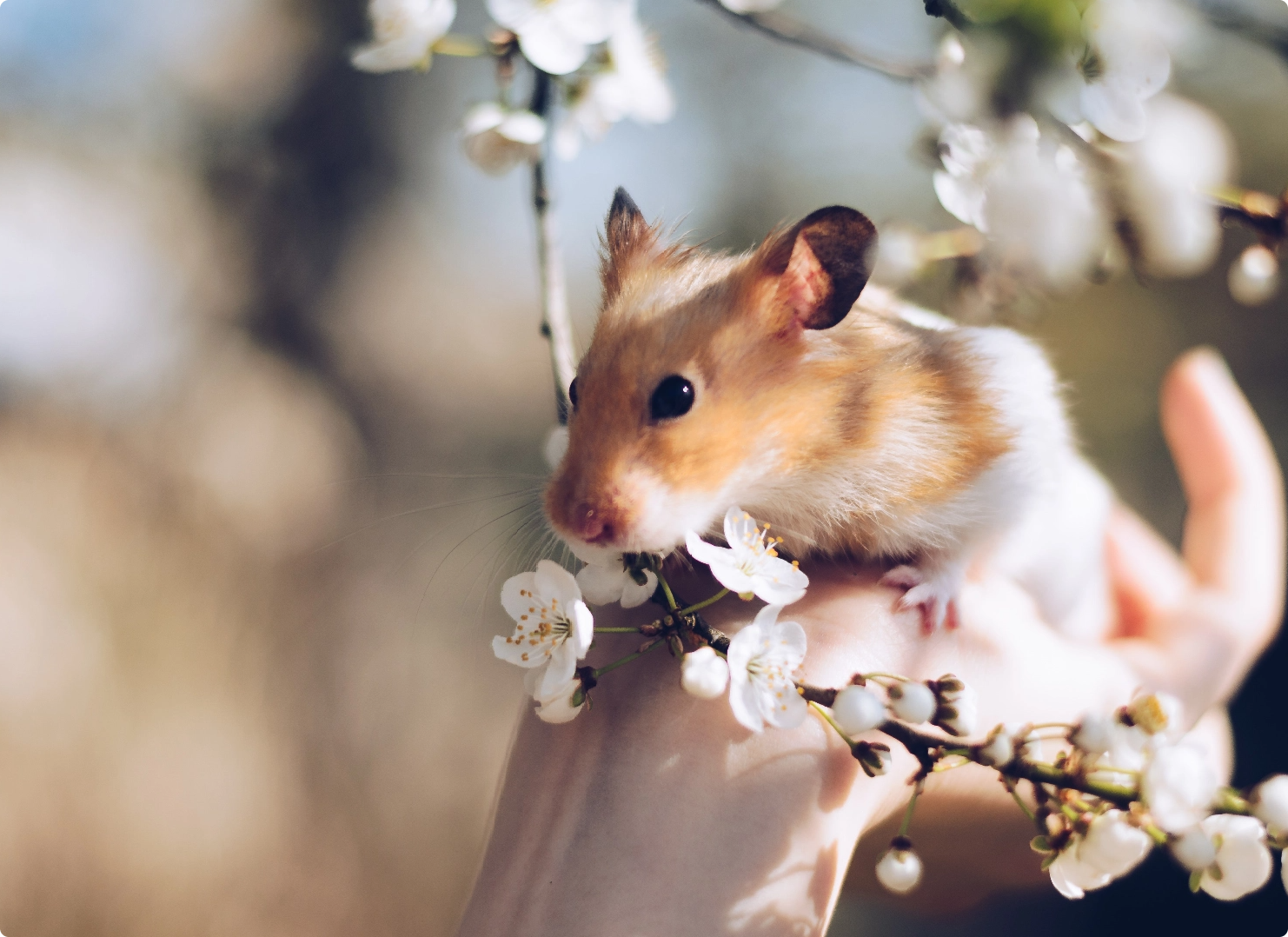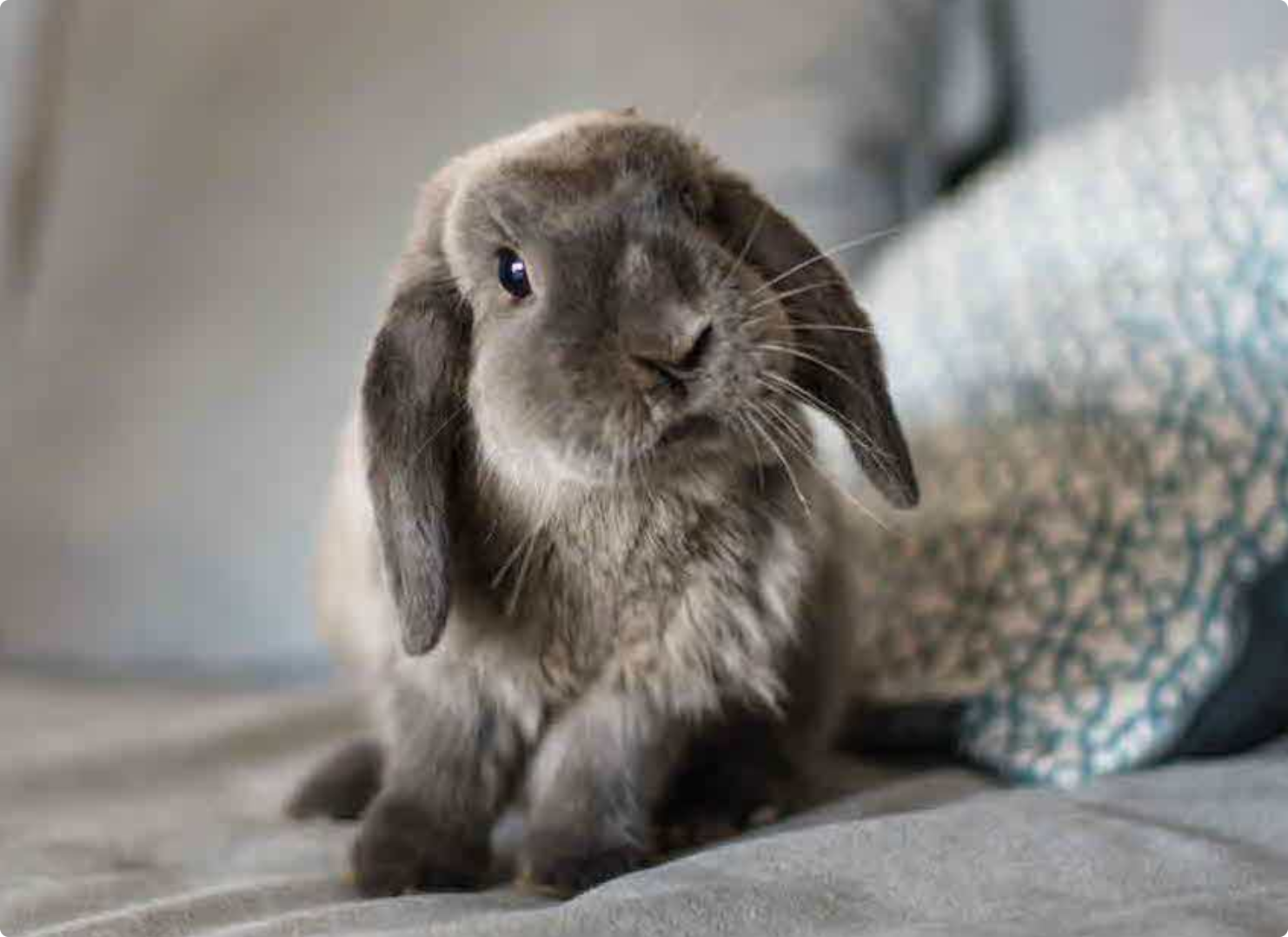
Cats Thrive On a Diet That Resembles Their Natural Diet.



Cats Thrive On a Diet That Resembles Their Natural Diet.
The Safe Room willmake you both happy!
Cats evolved from a desert-dwelling animal where small prey was abundant; vegetation and water were sparse.
As a result, a cat’s digestive system became very efficient at converting fat and protein into energy, but has difficulty processing carbohydrates.
In addition, cats are designed to obtain most of their water through their prey which typically consists of 75% water.
A Good Diet For a Good Health:
There is a strong and logical connection between the food cats eat and their long-term health, two common reasons for chronic health problems are diets too high in carbohydrates and too low in moisture.
Minimize Carbohydrates:
Dry foods may contain as much as 50% carbohydrates, and cats can’t efficiently process carbohydrates, they are stored as fat, this leads to obesity which can cause many health complications.
Need Moisture From Food:
WATER is vital to your cat’s health.
Dry foods only contain 10 percent water whereas canned foods contain approximately 78 percent water, a cat whose diet consists of mostly dry food will drink more water than a cat eating canned food, but in the end, when water from all sources is added together (what’s in their diet plus what they drink), the cat on dry food consumes approximately half the amount of water compared with a cat eating canned foods.
Since cats do not have a strong thirst drive compared to other mammals, it is critical that they get plenty of moisture from their food.
This is crucial when one considers the effects of chronic dehydration and how common kidney and bladder problems are in today’s cat.
What To Look For In Cat Food?
Wet/Canned Food:
The key in choosing a good type of food is to read the ingredients, avoid meat by-products, the more meat ingredients in the first few positions, the better the food.
Here’s a good example of an ingredient list from a high quality canned food: Turkey, chicken, liver, chicken, chicken broth…
Here’s one from a low quality product: Meat by-products, ocean fish, water, poultry by-products, fish broth…
Canned/wet food is often considered better for cats because it is closer to what they would eat in the wild than dry food.
Wet food has higher levels of protein and moisture, and lower levels of carbohydrates.
Where wet food keeps your cat hydrated, dry food dehydrates your cat.
Many vets now recommend always feeding wet food.
Dry Food:
The key to choosing a good quality food is to look for high quality protein ingredients as the first few ingredients listed on the label.
If the first ingredient is meat, turkey or chicken the label should say so.
Avoid foods with by-products listed in the first few ingredients, like “by-product” (un-rendered parts of an animal left over after slaughter) can include heads, feet, intestines, feathers, and egg shells.
Avoid foods that list grain—like corn, corn gluten meal, or rice—as any of the first few ingredients, the main ingredient in a cat’s diet should not be grain. Here’s an example of the ingredient list taken from the label of a high quality dry food: Turkey, chicken, chicken meal, herring meal… Versus a low quality food product: Ground yellow corn, corn gluten meal, chicken by-product meal, meat and bone meal…

Avoid Fish Varieties:
In general, the small amounts of “fish meal” used as a flavoring and/or source of omega-3 fatty acids in cat foods are not a problem, but food with fish as a main ingredient should not be a mainstay of any cat’s diet.
It should be limited to an occasional and small treat, here is why:
![]() Fish is one of the top 3 food allergens.
Fish is one of the top 3 food allergens.
![]() There is a known link between feeding fish-type canned cat foods and the development of hyperthyroidism in older cats.
There is a known link between feeding fish-type canned cat foods and the development of hyperthyroidism in older cats.
![]() Fish varieties have increased ash and magnesium content that can cause urinary tract infections and blockages.
Fish varieties have increased ash and magnesium content that can cause urinary tract infections and blockages.
![]() Predatory fish at the top of the food chain, such as tuna and salmon, may contain very elevated levels of heavy metals (including mercury) as well as PCBs, pesticides, and other toxins.
Predatory fish at the top of the food chain, such as tuna and salmon, may contain very elevated levels of heavy metals (including mercury) as well as PCBs, pesticides, and other toxins.
Dangerous Foods For Your Pet:
We often think of our pets not as an animal, but as a person.
After all, they have personalities just like we do, likes and dislikes etc…, and just as their human counter-parts, pets will often consume things that are not so good for them.
Some people foods are not safe for your pet to eat, while we all probably know someone who has routinely fed their pet one or more of these unhealthy and possibly toxic foods with no apparent adverse affects, most vets agree that you should avoid feeding these foods to your pet.
Dangerous Foods:
Alcoholic beverages – Avocado – Chocolate (all forms of chocolate) – Coffee (all forms of coffee) – Fatty foods – Macadamia nuts – Moldy or spoiled foods – Onions, onion powder – Raisins and grapes – Salt – Yeast or any raw bread dough – Garlic – Products sweetened with xylitol (used to sweeten some sugar-free candies and gum).
Other Dangerous Substances To Pets:
Cleaning agents – Citronella candles – Compost piles – Fertilizers – Flea products – Outdoor plants and plants bulbs – Swimming pool treatment supplies – Pesticides – Batteries – Any choking or intestinal blockage hazard.
If you suspect your pet has ingested something that may be hazardous, or if your pet suddenly shows any change in behavior, appetite, or overall appearance, you should contact your veterinarian immediately.
Does Dry Food Keep Kitty’s Teeth Clean?
Some people believe that dry food helps keep a cat’s teeth clean of tarter build up, most dry foods are hard but brittle so that the kibble shatters without much resistance; there is little or no abrasive effect from chewing.
The best way to keep your cat’s teeth clean is to brush them regularly.





